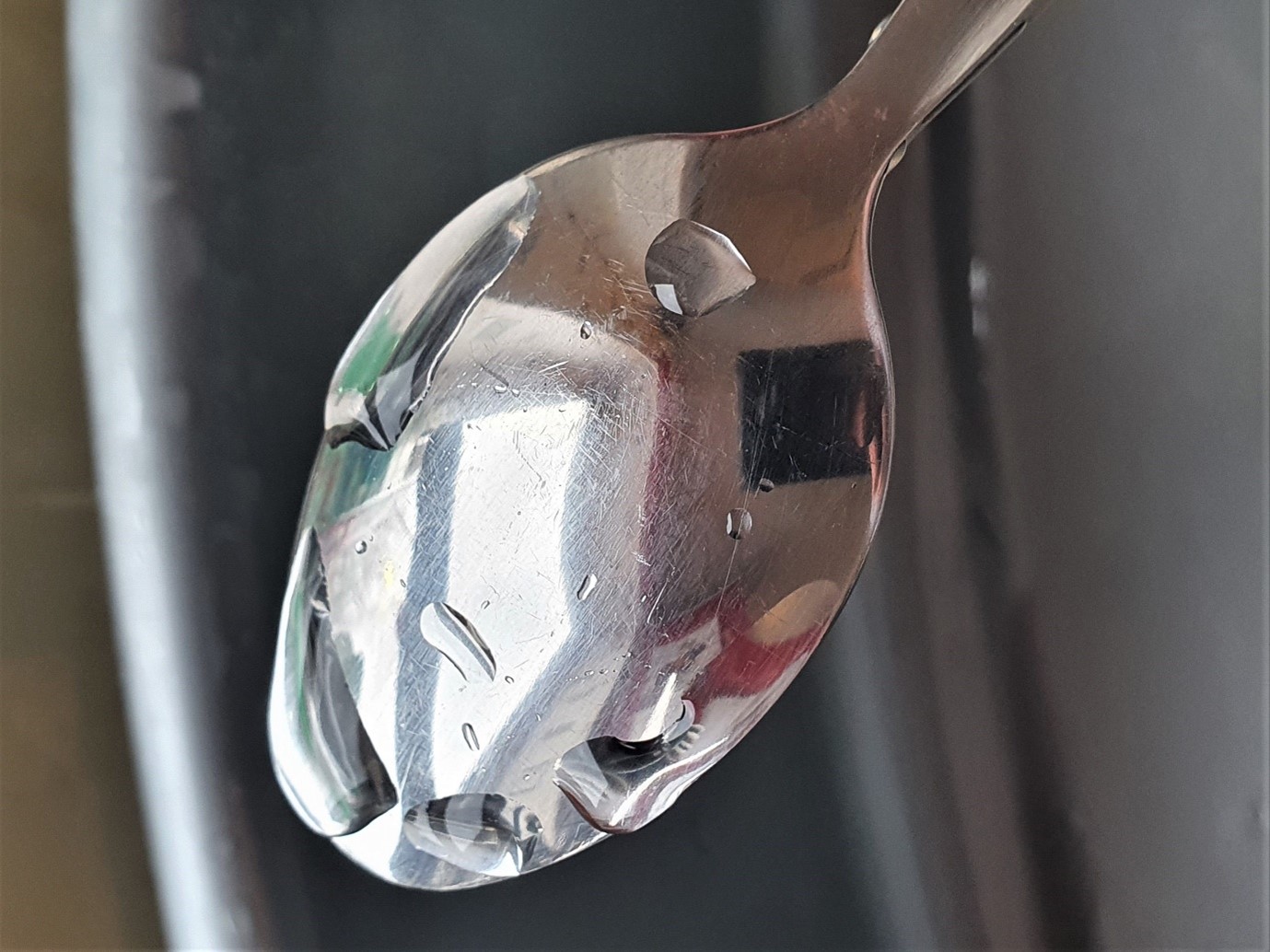Why perform the water break test?
For plating to have a successful bond to the substrate (surface of an object), it is extremely important that the substrate is completely free of grease and oils. When objects are handled, skin oils and other contaminants can be transferred onto the surface. This is not always obvious, but it is inevitable. Although plating may occur over a greasy surface, it can often result in foggy patches on the plated surface, spoiling the aesthetic appearance that all platers strive for – a flawless finish. Regardless of how clean an object appears; it is the job of the intrepid plater to play detective, seek out and get rid of the invisible enemy!
What is the water break test?

This is remarkably simple by performing the water break test. To do this, take any item - we suggest a spoon, and hold it under running water for a few seconds and observe how the water acts on the surface. Can you see the water splitting off into different directions where some parts of the spoon appear to stay dry? This is an example of the presence of grease blocking the flow of water.
If the spoon is taken away from the stream of water, you will observe that the water beads up in droplets rather than flowing off the spoon. This is because oil and water do not mix.
What can I do about this?
There is a very quick and easy solution to this problem, and it is literally a solution! This is where our G.S.P Electrocleaner Solution comes to the rescue. The object should be treated with electrocleaner via brush or tank for a few minutes at 6 volts, and this should remove the grease.
Once the electrocleaner has worked its magic, the water break test should be performed once again to confirm that all traces of grease have disappeared. This time, instead of observing beads of water on the surface, you should notice an even film of water ‘sheeting’ off the item, indicating that it is now free of all contaminants.
You can now progress to the next plating step, safe in the knowledge that your finished plated surface will be smooth, shiny, and lustrous.
In conclusion
To conclude, the presence of contaminants on the surface of objects is a problem that cannot be avoided but it can certainly be dealt with quickly and easily. The water break test should form part of all plating processes and is a great tool for your box of tricks.

